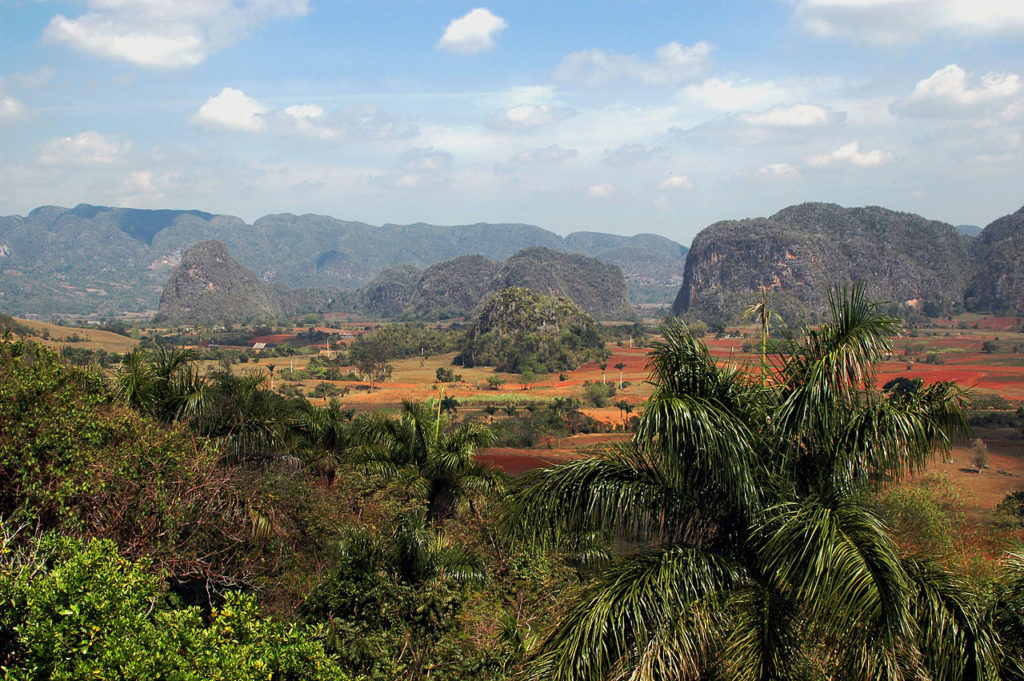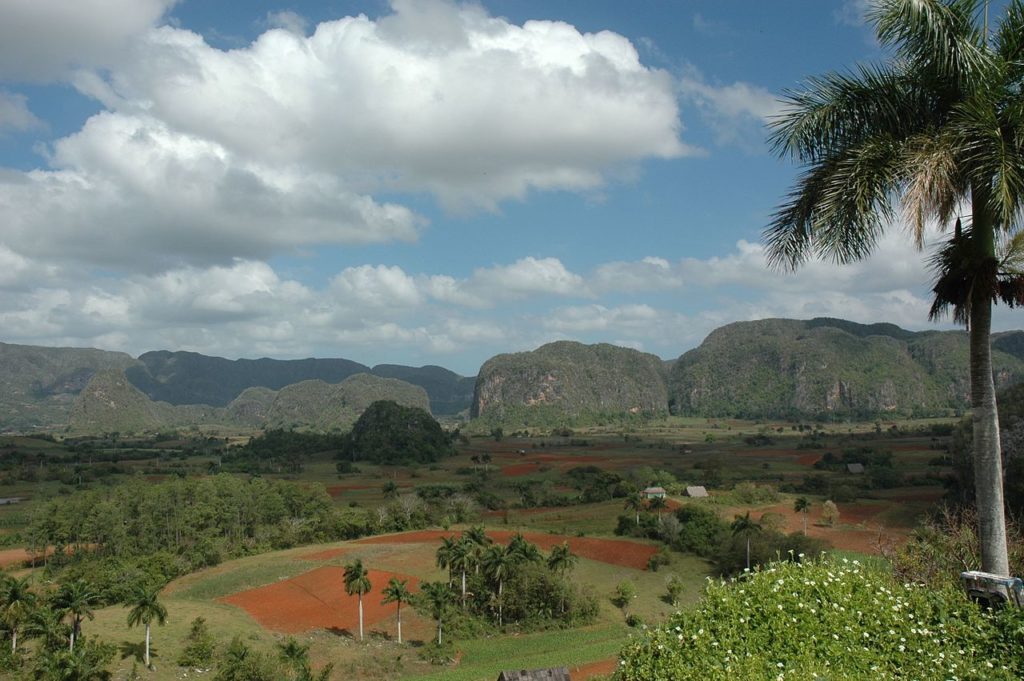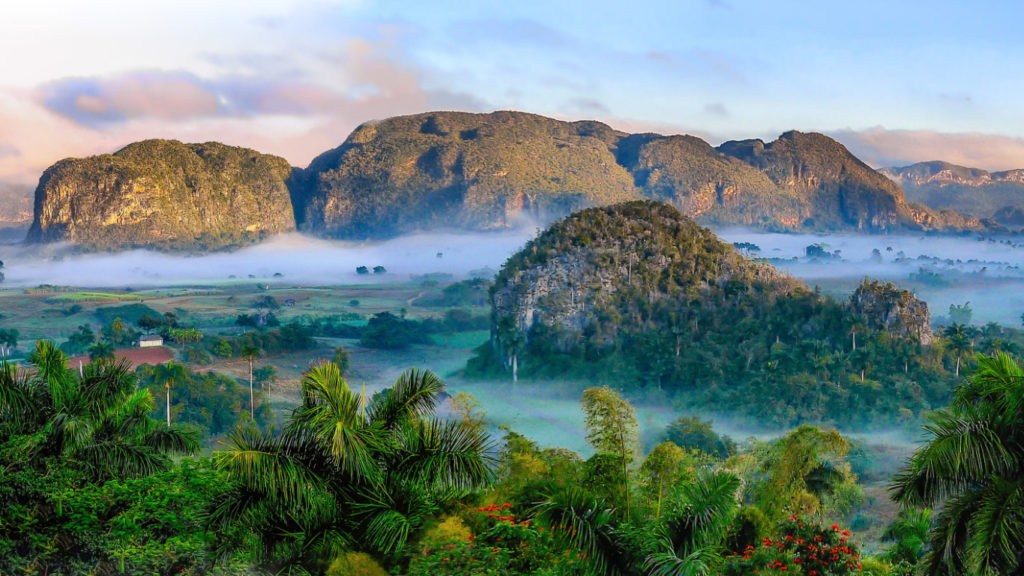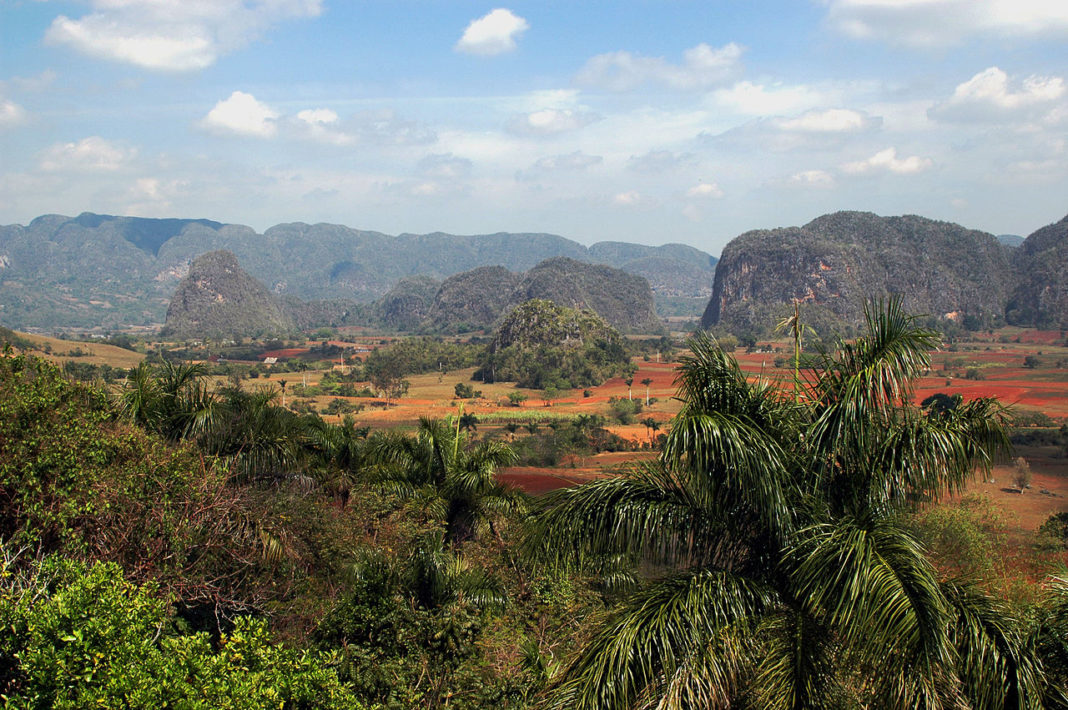The valley is a picturesque valley known for its dramatic limestone mogotes, or hills, which rise up to 100 meters (330 feet) above the valley floor. The mogotes are covered in lush vegetation, including tobacco, coffee, and fruit trees.

The Viñales Valley is a karst landscape, which means that it is formed by the dissolution of limestone rock. The limestone in the valley was formed millions of years ago from the remains of marine organisms. Over time, the water that seeped through the limestone dissolved the rock, creating the mogotes and other features of the valley landscape.

The mogotes are the most distinctive feature of the Viñales Valley. They are tall, rounded hills that rise abruptly from the valley floor. The mogotes are formed when the limestone bedrock is dissolved at a faster rate than the underlying clay. This creates a depression in the bedrock, which is then filled with soil and vegetation.

The topography of the Viñales Valley also played a role in its formation. The valley is located in a basin, which means that it is surrounded by mountains. This helps to protect the valley from the wind and the rain, which can help to slow down the dissolution of the limestone rock.

The karst landscape of the Viñales Valley is a fragile ecosystem. The dissolution of the limestone rock is a slow process, but it can be accelerated by human activities, such as deforestation and agriculture. It is important to protect the Viñales Valley and its unique landscape for future generations.
According to the Internet









![[HONORARY PROFESSOR OF RECORD FOR PRACTICE AND EMPIRICAL RESULTS – 2024] RECORD HOLDER CHU BAO QUE (BAC GIANG PROVINCE, VIETNAM)](https://worldmark.world/wp-content/uploads/2024/05/z5401509010514_2898fa0bcee3af78744ceb5f3984a5c8-218x150.jpg)





